On a brisk February morning, a line formed outside the New York Botanical Garden’s vaulted conservatory. Inside, winter layers discarded, visitors gazed at a mossy rock covered in bright, perfect orchids rising towards the white-boned dome of the greenhouse: the opening piece of the garden’s 20th orchid show, designed by the botanical artist Lily Kwong.
Pots spilled over with showy peach and fuchsia phalaenopsis orchids; some had white petals splotched with crimson, like a wine stain on a dress shirt. There were highlighter-bright cattleyas, a white spidery star orchid in bloom and beguiling Asian lady slippers. A woman in a floral dress crouched over the glossy, grotesque petals of a paphiopedilum. “They’re trouble,” she said.
The orchid occupies a peculiar place in our collective imagination. Some love orchids for their diversity – there are thought to be 30,000 species – while their beauty breeds obsession and their vulnerability opens our eyes to the climate crisis. Over the years associations with sex, decadence and empire have complicated the flowers’ evergreen allure. The sixth Duke of Devonshire built an acre of glasshouses to hold his collection; Prince had an orchid grotto on his estate; Halston would send orchids and cocaine to his friends for their birthdays.
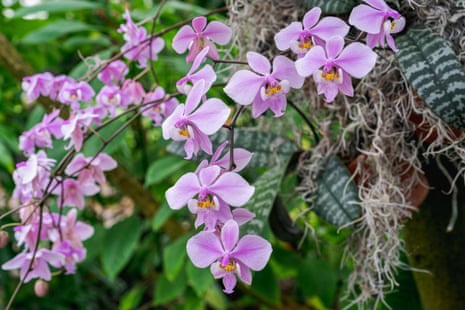
Orchids are a billion-dollar business; global exports of live orchids were estimated to be $2.51bn a year between 2016 and 2020. Commodities that desirable have an inevitable dark side – and among the fragrant pedigree dendrobiums at the orchid show are a few plants that are more like strays: orchids rescued from the black-market trade in rare and exotic plants, rehabilitated by the New York Botanical Garden in its lesser-known role as a plant rescue centre. When trafficked plants are seized by the US Fish and Wildlife Service, they are sent to the NYBG and other botanical gardens to be restored to health.
“Everyone hears ‘rescue centre’ and they imagine an emergency room with beeping monitors and IV bags,” says Marc Hachadourian, the bearded and jovial director of glasshouse horticulture and senior curator of orchids at the NYBG. He walks through the “back of house” greenhouses, where most of the garden’s 5,784 orchids reside, pointing out rescued plants: the tangled fat green ropes of a vanilla orchid; a messy dendrobium that arrived in the 1970s (some orchids can live 100 years); the cascade of pink petals of a Phalaenopsis schilleriana that arrived as part of a 2005 shipment of 1,100 orchids from the Philippines seized in Miami.
The plants come in, ratty and tortured, with bare roots and “on the verge of death”, and are inspected for pests and diseases. The team rebuild their root systems, rehydrate them and rehome them in the right habitat. They don’t all make it, Hachadourian says sadly, “but the point is we’re giving it our best try”. There’s little regularity to the arrival of these orphaned plants. Orchids are common, but so are cycads, thumblike ancient plants prized by collectors, as well as succulents, which are increasingly trafficked. On a shelf in the arid greenhouse are about 220 living stone cacti, which look like squashed, mustard-coloured artichokes, pried from between rocks somewhere along the Mexico border; next to them, a couple of pots contain what look like thorny asparagus spears, still part of an active criminal investigation.
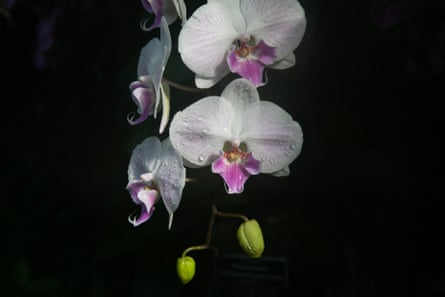
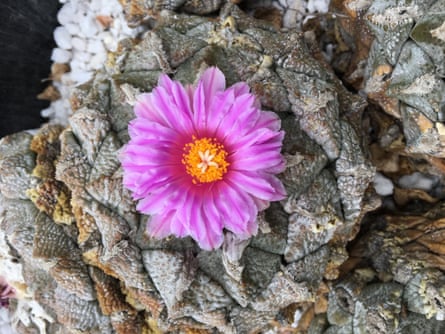
The import and export of endangered plants is regulated by the Convention on International Trade in Endangered Species of Wild Flora and Fauna (Cites). Orchids account for more than 70{f32667846e1257729eaaee80e922ba34a93c6414e9ad6261aff566c043b9e75d} of Cites-registered plants; most can be traded internationally with a permit, but for the rarest and most endangered orchids, the commercial trade in wild species is illegal.
Hachadourian is glad to participate in the rescue centre programme, but after 22 years at the NYBG, he wishes the plants weren’t still coming: “Because what you’re seeing is just a tiny fraction of an incredible volume of plants that are being shipped and traded around the world.” It’s difficult to assess the size of the illegal plant trade, but the combined market value of the illegal logging, fishing and wildlife trade has been put as high as $216bn.
Plant trafficking takes place in a few ways. In some cases, an illegal plant is smuggled in with a batch of legal ones with appropriate Cites paperwork; in others, people pluck endangered plants from the wild and rustle them across borders in their suitcases, or, in one memorable case, by tying stockings containing 947 succulents to their body. Most of the time, however, illegal plants are simply sent in the post.
Jared Margulies, an expert on the illegal wildlife trade and assistant professor at the University of Alabama, explains that it’s up to individual countries to enforce Cites, and plant trafficking is not always a priority. Orchids are less of a concern than narcotics, arms or even other wildlife. This is in part due to a phenomenon known as “plant blindness”, a tendency, as Margulies puts it, to “see plants as sort of the wallpaper or the backdrop to a kind of livelier animal world”.
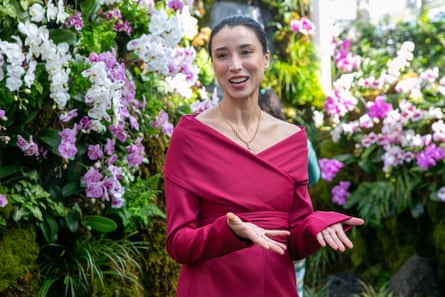
That blindness allows the illegal plant trade to proliferate. And, while some people may naively buy trafficked plants online, the black market is driven primarily by specialist collectors, says Margulies. There’s a trophy-hunting element to collecting that can cause some to abandon their scruples, which comes into play with orchids when new species are discovered – a fairly frequent occurrence. Particularly rapacious collectors want to be the first to own a new species, and, since prized plants are often slow-growing, they can be impatient to wait for a cultivated plant to reach flowering size.
Asian lady slipper orchids are the perfect example of this. These flashy orchids, with their pouch-like labella, are highly prized by collectors, and highly endangered, in part due to voracious poaching. When a new species, Paphiopedilum canhii, was discovered in 2010 in Vietnam, it was collected to near extinction within six months. Asian slipper orchids may be rare, but they are not expensive, emphasises Amy Hinsley, a senior research fellow in the biology department at Oxford University; while an artificially propagated, well-grown orchid can sell for tens of thousands of dollars, she has seen wild-harvested Asian slipper orchids for sale for $5. “Romanticising this is one of the reasons, I think, why people are trying to go out and do this. Because they have this idea that they can sell it for a lot of money, when most of the time they can’t.”
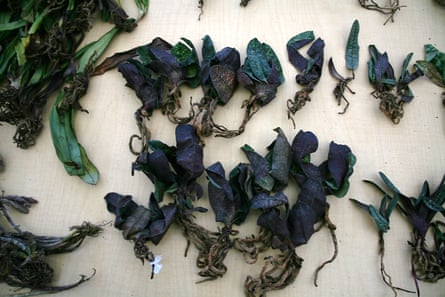

Social media accelerates this process, since it facilitates easy – and astoundingly open – connection between poachers and collectors. “This is not trade that’s happening in the dark web,” says Margulies. “It is happening right online in your face on Facebook, or eBay or Etsy or Instagram.” Hinsley describes vendors in Vietnam listing wild-harvested orchids for sale on Facebook Live, and YouTube videos of people unboxing shipments of unmistakably wild orchids. Her 2015 study of social media posts found that up to 46{f32667846e1257729eaaee80e922ba34a93c6414e9ad6261aff566c043b9e75d} of trade occurring in orchid groups was in wild-collected plants.
What’s more, social media amplifies desire, presenting collectors with a never-ending array of gorgeously photographed things they don’t have. And when it comes to orchids, that longing taps into a deep-rooted cultural obsession. Orchids captivated Confucius and the ancient Greeks alike (it’s to the latter that we owe the orchid’s longstanding association with sex; the word orchid stems from the Greek for testicle, orkhis, due to the shape of the twin bulbs of some species). But it wasn’t until the 19th century that a love for orchids exploded into full-blown mania.
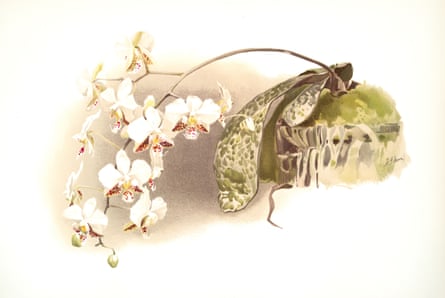
In Victorian Britain, collecting orchids was an aristocratic pastime – they required expensive hothouses and a person to venture into the tropics to rip them from their natural habitat and ship them home for you. Orchid collecting was part of the fantasy of empire, says Jim Endersby, a historian of science at the University of Sussex. They grew in distant jungles, “this pretend space in the imaginations of Europeans, who associate it with all kinds of things – the steamy heat is erotic in a way, but the dangers of the jungle, the poisonous animals, the head-hunting cannibals, all these other fantasies that Europeans tended to indulge in”. Collecting orchids was a way of participating in the exercise of imperialism from the safety of one’s own garden, says Endersby: “You bring some little bit of exotic, colonial stuff home, and you’ve taken part in the adventure of conquest and exploitation and all the other things about empire.”
An entire industry grew up around this so-called “orchidelirium”. In his book Orchid: A Cultural History, Endersby writes about orchid hunters who plundered rainforests, often destroying the remaining plants and their habitats to guarantee a monopoly on a certain species, and manufacturing rarity. Grisly stories were an important part of the legend-making; one dendrobium was sold at an auction while still attached to the skull of the human whose grave it had been robbed from. The best-known orchid seller was Frederick Sander, who sent orchid hunters around the world collecting. He was known as the “orchid king”, and some of the orchids in the NYBG’s collection originate from his nursery in St Albans, England.


The mythic associations that persist are part of the attraction for orchid collectors today, but so too are the beauty, weirdness and diversity of orchids. Christopher Satch, the vice-president of the Manhattan Orchid Society – one of hundreds of orchid societies crisscrossing the US, from Tucson to the Niagara frontier – explains that many collectors are drawn to orchids as oddities. “There’s literally a flower that looks like a bee. And there are flowers that look like nasty things and have weird patterns, and there are some orchids that actually smell fetid.” Botanically, orchids are fascinating: many reproduce by deception, in a process known as “pseudocopulation”. They mimic female wasps or bees to seduce the male into pollinating them, without rewarding the insect with nectar. Michael Pollan called them “nature’s version of the inflatable love doll”.
Love dolls, nasty things, imperial hostages, even just pretty flowers – orchids embody all kinds of moods and myths. Hachadourian hears people talking about orchids as having faces, an anthropomorphism that is, he thinks, at the heart of their appeal: a “recognition of something that mirrors a little bit of ourselves”.
That charisma can be a powerful tool for conservation. As the terrible march of the climate crisis causes species in the wild to go extinct before they’re even discovered, the New York Botanical Garden’s orchid show highlights the magnificence and strangeness of the plant world and its interconnectedness with our lives and the life of our planet – and, perhaps, spurs us into action to preserve it.
